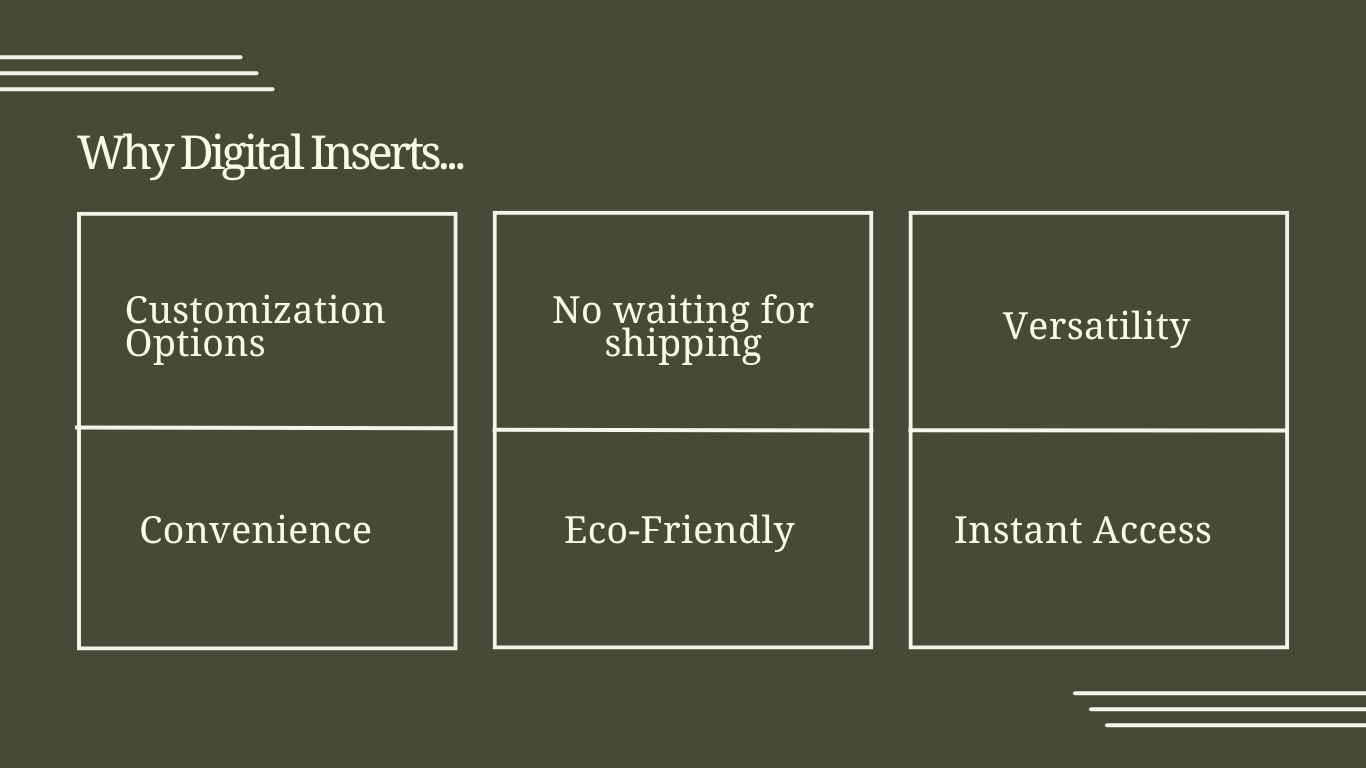Printing Guidelines
Learn how to print your documents either at home, at your local shipping store, or your local office supply store.
1. Paper Size and Orientation
- Paper Type: Use A5 paper that matches the size of your inserts.
- Orientation: Ensure your document matches the orientation of the inserts (portrait or landscape).
2. Printer Settings
-
Paper Size: Set your printer to "A5" paper size in the settings.
- On Windows: Go to "Printer Properties" > "Paper/Quality" > "Custom Size".
- On Mac: Go to "Page Setup" or "Print" dialog > "Paper Size".
-
Scaling:
- No Scaling: Select "No Scaling" or "Actual Size" in your print settings to ensure the design is printed at the correct size without resizing or distortion.
- Avoid settings like "Fit to Page" or "Shrink to Fit," as they can alter the proportions.
3. Document Setup
- Page Setup: Design your inserts in A5 format (148 mm × 210 mm).
- Bleed and Margins: If your design goes to the edge, include a bleed (3 mm on all sides). Trim the paper after printing if necessary.
4. Double-Sided Printing
- If your inserts are double-sided:
- Test the printer’s duplex mode (if available).
- For manual duplexing:
- Print odd-numbered pages first.
- Reinsert the paper and print the even-numbered pages.
- Pay attention to flipping/rotation to align the front and back correctly.
5. Quality Adjustments
- Print Quality: Use "High Quality" or "Best" settings for clear text and vibrant colors.
- Ink Considerations: For heavy designs, ensure sufficient ink levels to avoid uneven printing.
6. Test Print
- Print a single page or two first to check alignment, quality, and color accuracy before printing the entire batch.
7. Common Troubleshooting
- Margins cut off: Adjust margins or paper alignment in the tray.
- Pages misaligned: Test and correct manual duplexing settings.
- Paper jams: Use the proper paper size and weight (90–120 gsm recommended for inserts).

